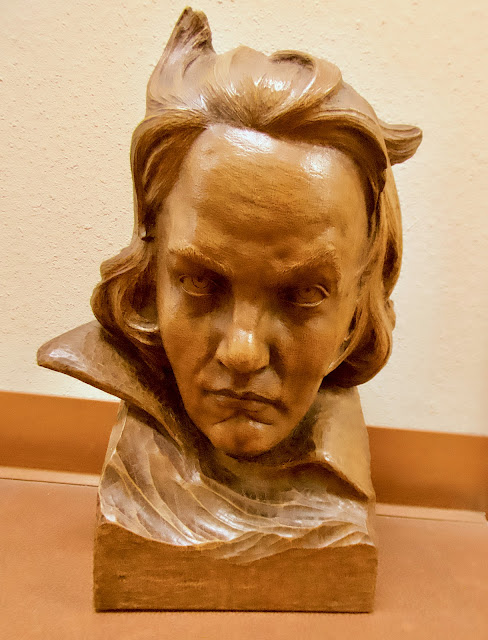Most appropriate for the season is this charming treasure from our trove, a 24-inch tall vintage statue of the famous Infant Jesus of Prague. The original sacred santos is a wax-coated wooden figure of the Christ child dating from the 16th century residing in the Discalced Carmelite Church of Our Lady of Victories in Prague, the capital of the Czech Republic. Like his Czech counterpart, this Infant holds in his left hand a globus cruciger (an orb or globe topped by a cross, signifying Christ's dominion over the world) and his right hand is raised in benediction. The original Infant is clothed by Carmelite nuns in beautifully tailored robes sewn from luxurious materials and our version is elaborately clad in a white robe trimmed with rows of lace, with a golden cloak draped over the Infant's shoulders.
He wears an intricate filigree golden metal crown adorned with multicolored glass gems. Out of chalkware, his sweet solemn face is beautifully painted and he has inset blue glass eyes.
Legend holds that the statue originally belonged to Teresa of Ávila, also known as Saint Theresa. In 1556, Spanish noblewoman María Maximiliana Manriquez de Lara y Mendoza brought the figure with her upon her marriage to Czech nobleman Vratislav of Pernstyn. Her daughter Princess Polyxena von Lobkowicz donated the statue to the Discalced Carmelite friars in 1628.
In 1631, during the Thirty Years' War, the friary was plundered and the Infant left on a pile of rubble, its hands broken off. When the friars returned in 1637, Father Cyrillus found the broken statue and knelt in prayer. He then heard a voice say, "Have pity on me, and I will have pity on you. Give me my hands, and I will give you peace. The more you honor me, the more I will bless you." The statue was repaired and given a place of honor. The Infant is credited with numerous miracles and healings.
Copies of the Infant are venerated by many Catholics throughout the world. In Ireland the Infant is thought to influence the weather and it is traditional for a bride to place a statue of the Infant in a window or garden to ensure fine weather on her wedding day.
All posted items are for sale at Next-to-New, but things can sell quickly!
15634-472









